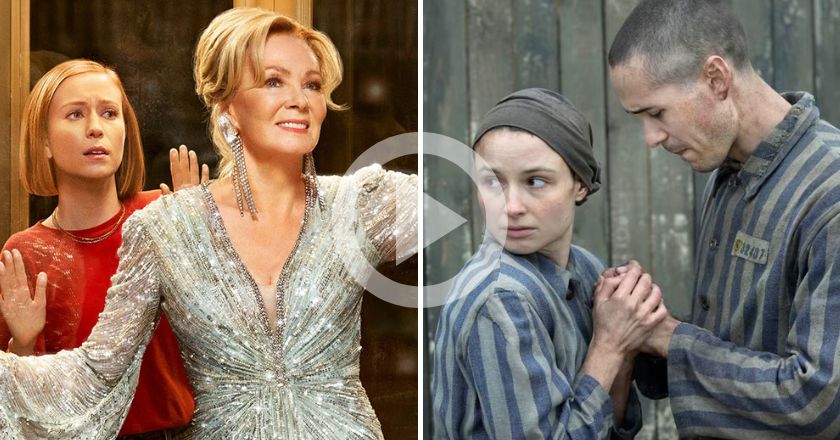
Still Life is, quite simply, a stunning movie. Every minute of it warmed the cockles of my heart. The melancholic premise is gentle where other films would manipulate, quiet where music would bombard and organic where SFXÂ usually dominates. A film about loneliness and a longing for human connection is a concept that sounds boring and self-righteous, but this film is anything but. Director Uberto Pasolini (famous for producing The Full Monty) has a beautiful way of getting the most out of his actors by limiting dialogue to avoid cluttering the tone. It is this cinematic essence of simplicity that is at the core of the film’s heart and success.
Eddie Marsan (The World’s End, Filth) is wonderfully cast as John May, a meek and mild, middle-aged bachelor whose job is to step in, in the absence of family and friends, when someone in the community dies alone. As a surrogate next of kin, May takes his job very seriously and prides himself on the thorough and dignified send-off he ensures for each of his “cases”. When he discovers he is to be made redundant and that the burial of colourful alcoholic Billy Stoke will be his last, he pours his heart and soul into making it one of his best.
Marsan has such a subtly commanding on-screen presence. His expression is rarely jovial, but you can’t help but smile when watching May passively go about his lonely but purpose-driven life. He is an unusual looking chap, but magnetic none the less with his big blue mournful eyes, elfin ears and shy mannerisms. He is cartoonish but not exaggerated; a masterful mix of fragility and poise. Marsan can convey so much in a prolonged stare or moment of serene stillness, and underscored by a haunting but sweet piano theme throughout from Pasolini’s composer wife Rachel Portman, the overall effect is warm and poignant.

May’s life is pitifully uneventful ““ even echoing the lives of those he deals with in death ““ but his motivations are selfless and humble in a world where people (even films) are seeking so much validation and praise. Like most heroes you see on-screen, I was looking for the light and dark side to May, but there isn’t one. He’s actually quite a one-dimensional character in the loveliest of ways. He is just a genuinely good, decent man. It’s so refreshing to see someone find contentment and joy in helping everyone but himself.
The supporting cast is appropriately intimate, with Downton Abbey‘s Joanne Froggatt the only other lead alongside Marsan. Froggatt is such a natural actress ““ but more measured and mature than the typical girl-next-door type ““ and maintains an effortless blend of ordinariness, sensitivity and awkwardness. Her character of Kelly Stoke (the estranged daughter of Billy) is an instantly suitable match for Marsan’s equally tender May, and the pair share such gorgeous (though limited) scenes together.
Cinematographer Stefano Falivene (Bel Ami) beautifully captures the rawness and poignancy of death with real sensibility. It’s the small, often odd details that pull the heartstrings most, from the recent handprint in a pot of face cream to Y-fronts drying on a clotheshorse. These final, physical impressions of a life once lived are powerful shots when you consider there are no mourners to remember anything beyond them.
Photographs are also important glimpses into the lives of the deceased, and May collects and catalogues many pictures to refer to in the deceased’s eulogy and funeral (which of course, only he attends). In the hands of another director or actor, this habit could be portrayed as creepy and intrusive, but Marsan handles May’s idiosyncrasies and fastidiousness with care and innocence.

The setting alternates between May’s boxy flat, boxy council office and the almost inviting grass and granite of the local cemetery. A soft palette of dreary greys, cool blues and whites, Still Life is much like the type of painting the title evokes ““ an intricately, lovingly created portrait of mundane life. Grimy council estates are so common and dull in reality, but through Pasolini’s directorial eyes, there’s a moving and thought-provoking message in every frame.
There are only a few hints at the constructed nature of this quaint fictional world, from the repetition of May’s canned meals, broken chairs propped up by books and lots of walking in and out of frame. These moments are gems ““ scenes where art imitates life. There is also is a lot of gentle, black humour underlining the film (from drinking whiskey with two homeless men, to encounters with dogs and fish) which helps to lighten the mood of an otherwise mostly sad scenario. Finally, a brave twist in the film’s ending leads to one of the most heartbreaking and touching finales of any movie I’ve seen.
Still Life has it all. It’s not self-indulgent like most independent films, and resonates because of its optimistic outlook of even the most tragic of lives. The film is ultimately about decency and TLC ““ a life-affirming tale enriched by an indelible performance from Eddie Marsan, who carries the film’s heart and integrity on his slouched but proud shoulders. Still Life is a movie that makes you think about life and death, but not in the clichéd sense. If I can live my life just a little bit like John May, than that’s a legacy I’d be proud to leave.
THE REEL SCORE: 9/10







